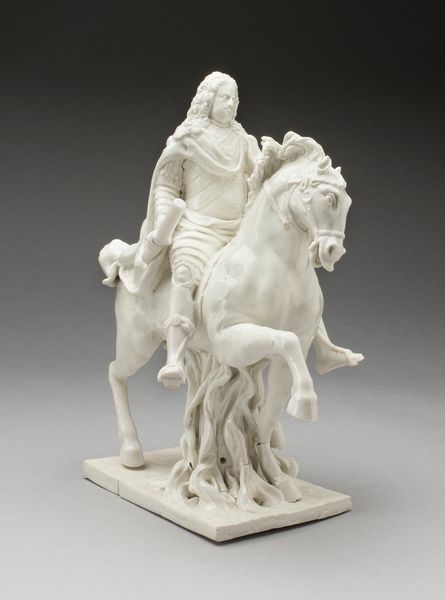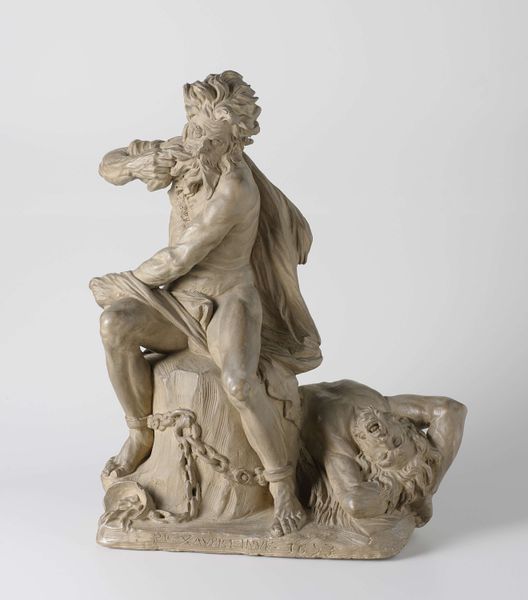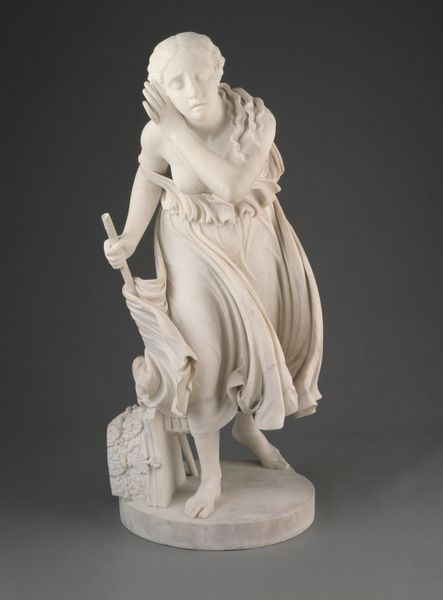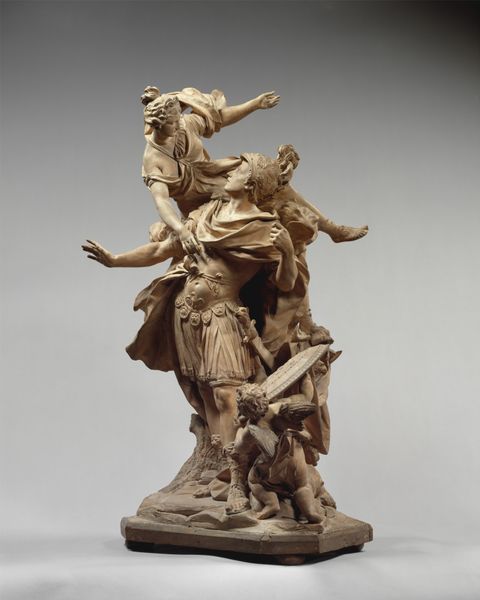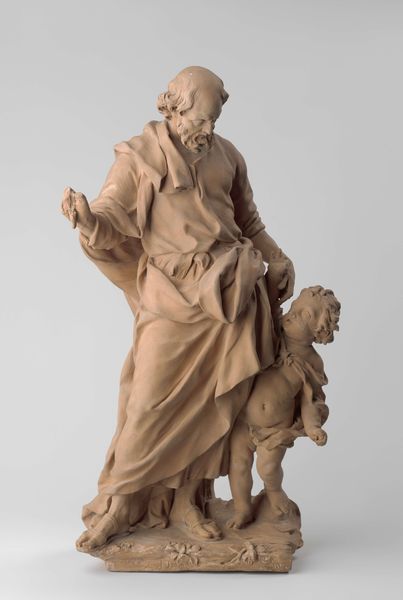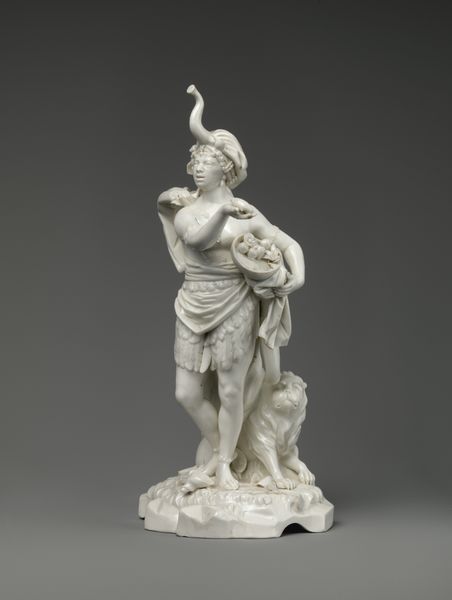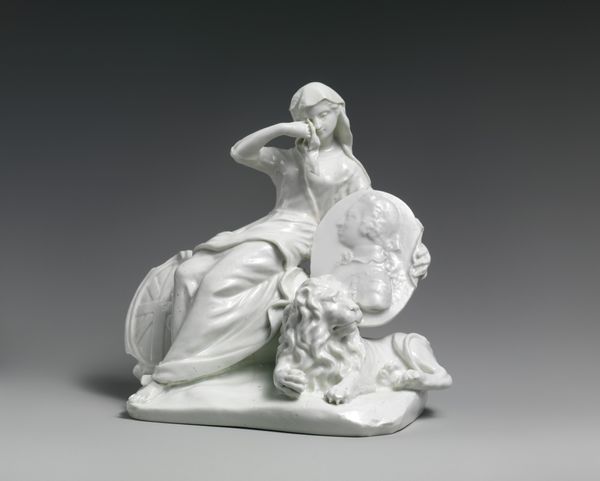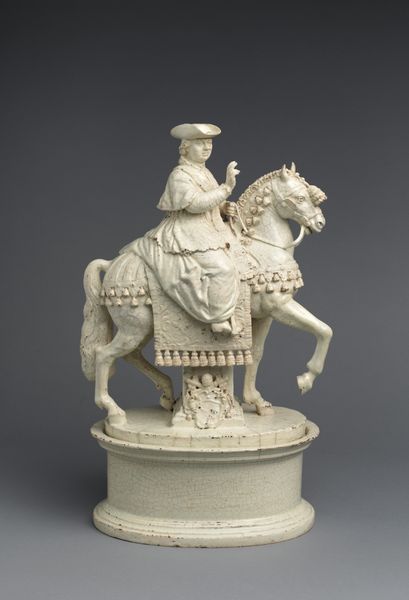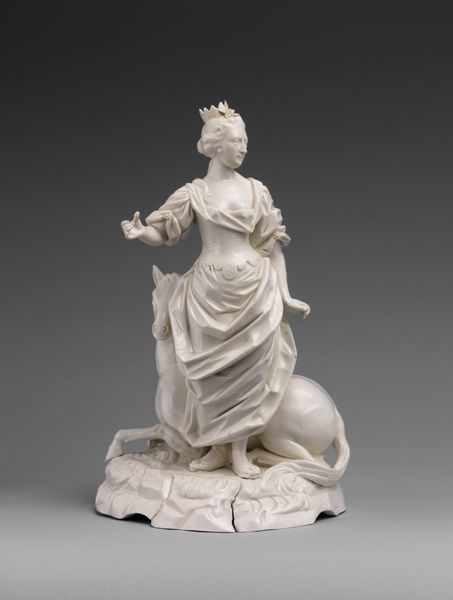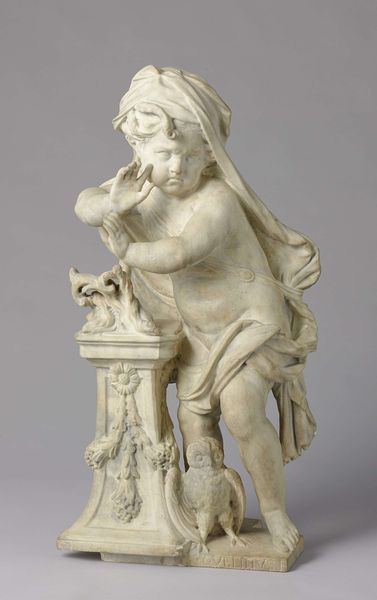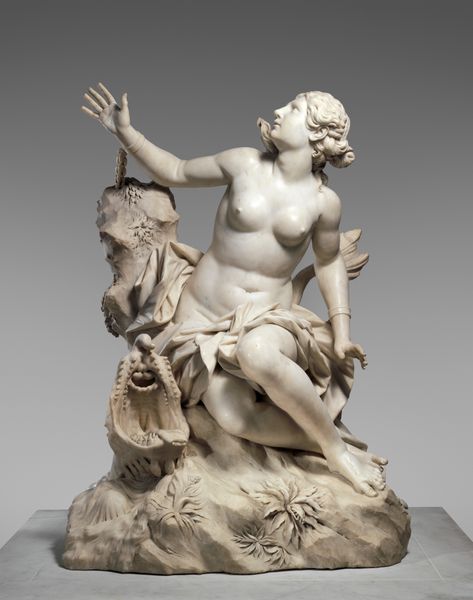
Dimensions: 10 1/2 x 9 1/4 x 7 1/4in. (26.7 x 23.5 x 18.4cm)
Copyright: Public Domain
Curator: We are looking at Giovanni Volpato's ceramic sculpture "Europa and the Bull," created around 1785. It's currently part of the Minneapolis Institute of Art collection. Editor: My immediate impression is one of airy grace, even tenderness. The sinuous curves of the figures play beautifully against the stark whiteness of the material. Curator: Precisely. The composition exhibits a clear Rococo sensibility, emphasizing delicate asymmetry and refined detail. Observe the implied diagonal formed by Europa’s draped arm extending towards the bull’s horn; it directs the eye through the entire piece, culminating in the Cupid figure at the base. Editor: Cupid! He is so sweet. He’s like an insistent dream here. He represents desire and how the myth of Europa—a mortal princess seduced and abducted by Zeus in the guise of a bull— is rooted in love, transgression, and destiny. Bulls are associated with strength, virility, and sometimes violence; its connection to Europa underscores those dualities. Curator: Absolutely, though notice how Volpato subverts any sense of brutality. The bull’s features are softened, almost docile, which contributes to the sculpture’s overall sense of decorum. It also illustrates the complexity of the rococo tendency to restrain itself to a more graceful version of reality. Editor: Right. Think of Europa's attire as well. Her clothes are draped just so—a sort of restrained sensuality—as if it's revealing what's essential beneath those very delicate garments, suggesting the potent drama and sensuality bubbling beneath a placid surface. Curator: Consider the formal elements at play—the way light interacts with the highly polished ceramic surface, creating subtle gradations and highlights that enhance the sculptural volume, or the way Volpato sculpts flowers into the bull’s head, adding intricate detail. The flowers transform the animal into more of an ideal emblem. Editor: It all makes this mythological episode relatable, a tableau of shared dreams and hidden desires. Europa represents potential, promise, and the bold crossing of boundaries in pursuit of new frontiers. Curator: A compelling intersection of formal mastery and symbolic richness. It gives you a clear vision into the stylistic values of its period. Editor: It truly invites us to consider how classical narratives endure. I find it such a powerful interpretation of our cultural memory.
Comments
minneapolisinstituteofart almost 2 years ago
⋮
This sculpture depicts the famous mythological tale in which Jupiter transforms himself into a bull to carry away the young, beautiful Europa. Cupid runs along side the bull. The only other known version of this subject is at the Cini Collection of the Musei Capitolini in Rome.
Join the conversation
Join millions of artists and users on Artera today and experience the ultimate creative platform.
